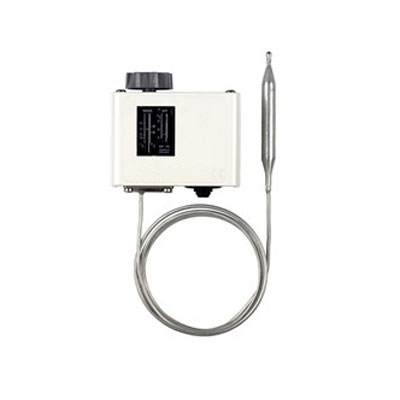Phone Number
(+91) 8655358999
Temperature is one of the most important measurement parameters that is used for monitoring and control in various industries. It can be measured with the help of a diverse temperature measurement devices. This post will discuss how temperature measurement is important in different industries. It will also detail different types of temperature measurement equipment.
A thermocouple is an electrical device consisting of two dissimilar electrical conductors forming electrical junctions at differing temperatures. ... Applications include temperature measurement for kilns, gas turbine exhaust, diesel engines, and other industrial processes.

Temperature range: Most practical temperature ranges, from cryogenics to jet-engine exhaust, can be served using thermocouples. Depending on the metal wires used, a thermocouple is capable of measuring temperature in the range ŌĆō200┬░C to +2500┬░C.
Robust: Thermocouples are rugged devices that are immune to shock and vibration and are suitable for use in hazardous environments.
Rapid response: Because they are small and have low thermal capacity, thermocouples respond rapidly to temperature changes, especially if the sensing junction is exposed. They can respond to rapidly changing temperatures within a few hundred milliseconds.
heating: Because thermocouples require no excitation power, they are not prone to self heating and are intrinsically safe.
ApplicationThe thermocouples are suitable for measuring a large temperature ranges. The higher range of the temperature is 2300C. By using the thermocouple, we can measure the gas turbine exhaust, kilns, diesel engines and fog machines. They are suitable for lesser applications, but the smaller range of temperatures is measured accurately. For the small measurement application the devices use are silicon bandgap temperature sensor, thermistor and resistance thermometers are suitable
RTDs - or Resistance Temperature Detectors - are temperature sensors that contain a resistor that changes resistance value as its temperature changes. They have been used for many years to measure temperature in laboratory and industrial processes, and have developed a reputation for accuracy, repeatability, and stability. Most RTD elements consist of a length of fine coiled wire wrapped around a ceramic or glass core. The element is usually quite fragile, so it is often placed inside a sheathed probe to protect it.

Air conditioning and refrigeration servicing, Food Processing, Stoves and grills, Textile production, Plastics processing
A temperature transmitter converts the thermocouple or RTD signal to a 4-20 mA output signal and is the ideal solution for many remote temperature measurement applications. 4-20ma transmitters have definite advantages over conventional temperature measuring devices, but must be selected with caution in order to avoid ŌĆ£ground loopŌĆØ problems.

Used in many Industries to transmit temperature in 4-20 mA signal from remote Temperature Sensor to PLC or any other control system.
Temperature switches are used in a variety of industrial and technical processes. If a preset temperature is reached, then the temperature switch opens or closes a corresponding switch contact. Depending on the requirements, mechanical or electronic switches can be used. In WIKA's broad product range, you will find the right temperature switch for every application.

To control different machines in different processes depending on the temperature setpoints.
A bimetallic switch is a control engineering component which causes a certain action once a defined temperature is reached, e.g. switching off a process in order to avoid overheating. It is based on the fact that under changing thermal conditions every metal expands or contracts according to a fixed thermal expansion coefficient. Hence the bimetal, a component made of two connected strips of different metals (e.g. steel and zinc), bends when the temperature changes. Once the bending strain reaches the limit defined by the designer of the switch, the bimetallic switch is activated.
Temperature indicators are installation instruments which can process signals from temperature sensors and show them on the display. Temperature indicators to process signals from temperature sensors and show them in the display.Temperature indicators enable easy and economic valuation of resistance sensors, such as Pt100 or different thermo element types. These sensors can be directly connected to temperature indicators to avoid the installation of a transducer.
They are designed for use in hazardous environments, housed in a heavy-duty enclosure certified flameproof for gas groups I, IIA, IIB and IIC with IP66 rating - completely dust proof and protection against even powerful jets of water.
A temperature gauge is a device used to indicate the temperature of an item being monitored. The display can be an analogue dial, an analogue range or a digital readout. Common methods of measuring temperature include bimetallic strip (the bending of which increases with temperature) and the thermocouple which produces an electronic voltage that depends on the temperature.

This instrument works best in applications such as power generation, oil and gas, waste water, and pulp and paper. Vapor Actuated Thermometers are economical temperature gauges that provide an accurate remote reading for applications such as refrigeration, solar heating, and water treatment.
Thermostat is used for controlling heat tracing systems in hazardous locations. It is also used as a switch for controlling devices based on temperature variation.